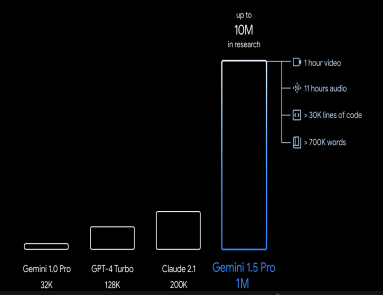Today, data serves as the foundational pillar across nearly all industries. However, optimizing data and managing its flow are always significant challenges. Kestra is a powerful tool that enables businesses to run and monitor data flows easily. The platform is gaining attention from developers worldwide.
Let us explore what makes Kestra unique. This post dives into its architecture, features, and real-world use cases.
Overview of Kestra
Kestra is an open-source workflow orchestration tool. It helps building and automating workflows across all modern infrastructures.
Kestra was first released on February 1, 2022. Ludovic Dehone, the CTO of Kestra, initiated this project in 2019.
Written in Java, the platform lets users create, schedule, and monitor complex tasks and processes. It features a YAML-based syntax, making it user-friendly for beginners.
In addition, Kestra supports integration with various APIs, data systems, and cloud services. It is known for managing complex data workflows and building pipelines in a few minutes.
Let us take a closer look at the architecture of this platform.
Architecture of Kestra
Kestra has a cloud-native architecture that makes it a comprehensive tool. Some of its primary components include:
- Executor: It is the heart of Kestra’s runtime environment. The executor launches the schedule of workflows. It also monitors the state of running workflows. If any task fails, the executor restarts it. Kestra reacts instantly to any fluctuation in the task due to its event-driven architecture.
- Scheduler: The scheduler organizes the workflows using CRON or event-based triggers. It determines when workflows should run and assigns execution to the executor services.
- UI & API: It includes an easy-to-use web interface to manage workflows, system health, and logs. Kestra features a REST API. This graphical user interface allows users to design, monitor, and troubleshoot workflows without writing any code.
- Storage & Persistence: Kestra stores workflow definitions, execution logs, and metadata in a centralized database. The database ensures high uptime and provides quick recovery support.
- Plugins: Kestra features a robust plugin system that enables integration with third-party services such as AWS, Azure, and Git. It provides support for 200+ plugins.
- Queue: This component is responsible for managing communication between components. Kestra features pluggable queue systems.
Features of Kestra
Kestra offers a rich set of powerful features that set it apart from other workflow orchestrators. Some of its most noteworthy features include:
- Community Support: Kestra is an open-source orchestrator with a growing community. Numberless users contribute to its development and share their experiences. The platform offers many resources to its users, including a contributor guide and a plugin development guide. It also has an FAQ section that addresses common questions.
- Simplicity: Kestra allows you to define workflows as YAML files. Unlike other orchestrators, Kestra takes an intuitive and readable approach that reduces the complexity of developing and maintaining pipelines. As Kestra is a language-agnostic platform, developers can write tasks in various languages, such as Python, Javascript, Java, and more.
- Developer-Friendly UI: Kestra has an intuitive and accessible user interface. It features an easy-to-navigate dashboard, allowing developers to debug errors, edit workflows, and rerun them without switching tabs. Developers get real-time insights into tasks execution, detailed logs, and other metrics. These features enable faster debugging and enhance developer productivity.
- Easy Setup and Configuration: Kestra supports straightforward configuration. Users can easily access it regardless of their skill levels. They do not need deep technical expertise to understand its functionality. Its clean and user-friendly interface simplifies complex tasks.
- Scalability: Kestra is built for horizontal scalability, allowing it to grow seamlessly with demand. Developers can manage everything from simple workflows to complex data pipelines. Its cloud-native architecture scales effortlessly to support millions of executions.
- Scheduled Triggers: Kestra allows developers to trigger workflows via CRON schedules, messaging queues, API calls, and file system events. This makes it ideal for both time-bound processes and reactive, event-driven architectures.
- Security: Kestra features role-based access control authentication. You can assign particular permissions to users based on their roles within the organization. Kestra also has an audit logging feature to track user activity and unusual behavior. These security features are suitable for businesses with strict compliance requirements.
Use Cases of Kestra
- ETL/ELT Pipelines: Kestra helps you manage data workflows by pulling data from sources. It can process data and send it to data warehouses. The platform works well with databases like MySQL, BigQuery, and Snowflake.
- Workflow Automation in DevOps: Developers can use Kestra to automate code testing, set up servers, and launch web applications. In web development, deployment and testing are repetitive tasks. Kesta supports these tasks by orchestrating CI/CD workflows.
- Running Tasks Based on Events: Kestra initiates workflows in response to events, such as file uploads or incoming messages. In short, the platform can respond to real-time changes.
- Machine Learning Pipeline Automation: Kestra is well-suited for managing the entire machine learning workflow, from data preparation to model testing and deployment.
- Checking & Cleaning Data: Kestra helps developers verify that data is accurate and properly formatted before using it for analysis.
Conclusion
Kestra is an innovative platform that helps you manage complex data workflows. You can integrate it with numerous tools and systems. Its event-driven architecture and low-code approach empower developers and operations teams.
If you want to automate your data processes with confidence, consider giving Kestra a try.










